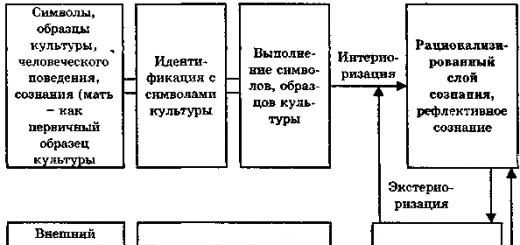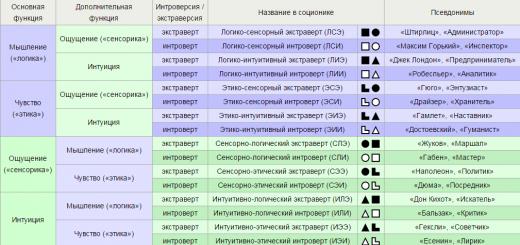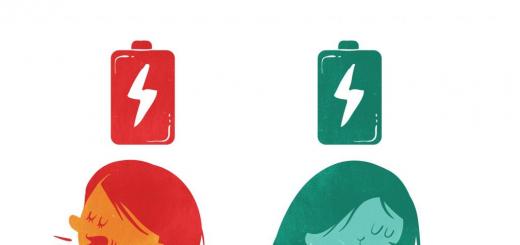Monday hello! Hello! My name is Alexei Znamensky, I will be your curator for self-study of Russian sign language - RSL. I am 32 years old, I am an actor, director. I graduated from two institutes GSII and VGIK and now I work in theater and cinema. With the choreographer Elena, he staged the plastic performances “Without the Right to an Angel” and “The One Who First Learned What Rain is” in the theater project “Nedoslov”. Cinema is at the scripting stage. (I don't need to send them, I work with one screenwriter :) I know sign language since childhood. I went to a sign song circle, and then supplemented it at the theater institute. At first, I will speak in a voice, and then I will abruptly switch to ZhA. Therefore, if you do not understand what I said in ZL, do not be shy, write loudly and quickly - and I will voice it quietly and slowly. The first time - try to stock up on words-gestures. Try to see and think in images, justify them logically for yourself, connect them with associations. For example: a bird (means we wave our wings with our hands, plus we supplement with a “beak” gesture) A sign language is a language in which everything is built on images, even if some gestures are completely non-figurative. There are well-established, there are logically justified. This can be read in the theories of ZhA. Plugging your ears is also not necessary, just look and see. Be the driver in the car. In a car, you don't hear what pedestrians are saying, you usually only guess. Do not try to understand everything at once - otherwise the brain will rebel, and you will lose all desire to learn. A little bit of everything and bit by bit. Don't be discouraged if by the fifth week you don't understand anything. It is likely that in the eighth week it will suddenly become easy for you to understand. Everyone has their own watch. In this article, you can find various introductory links to choose a convenient tool for studying SL.
Resources and materials
1. Online dictionaries(For me personally, it is convenient to use such dictionaries, a specific word can be typed in a search engine) http://signlang.ru/ http://www.spreadthesign.com http://surdoserver.ru/ http://www.digitgestus.com 2. Courses- Fradkin's book "Talking Hands"(recommended) - can be found and downloaded online or purchased from local deaf communities or second-hand booksellers.
- Sign language course https://www.youtube.com/playlist?list=PLA357506657984F1A
- Video dictionaries (for me personally, it’s not convenient because you have to scroll and look for certain words, but if this option is convenient for you, for God’s sake!) https://www.youtube.com/watch?v=i0CwMj-HVnQ Video Dictionary Part 1. https://www.youtube.com/watch?v=QT5KlNnwyc8 Video Dictionary Part 2. https://www.youtube.com/watch?v=S0F-QrE4EF8 Video Dictionary Part 3. https://www.youtube.com/watch?v=CFYkQ9Pynv0 Video Dictionary Part 4. https://www.youtube.com/watch?v=9uSCmlVb3Wg Let's get acquainted! Russian sign language video lesson for beginners (2015)
Where to begin:
1) Hand warm-up
Warming up the fingers and hands should be done every day for 15 minutes. For those who have never spoken ZY, wooden gestures will be visible for the first time. It's okay, everything is acquired through exercise and warm-ups. Hand warm-up - for life! It is useful for all beginners, both hearing and non-hearing. Here's a great video: https://www.youtube.com/watch?time_continue=30&v=lRWU-DTzLlI2) Dactylology
Dactylology is a manual alphabet. You need to learn it well, since many gestures begin with some letter. For example: it is necessary - the letter H, tea - the letter H. Download the manual alphabet RZYA 1 video version of the alphabet - https://www.youtube.com/watch?v=9Sex-znpxj0 2 video version of the alphabet - https://www.youtube.com/watch?v=2SMlvOPOKRs 3 video version of the alphabet ( optimal) – https://www.youtube.com/watch?v=BoCRf9AslgA Hint: The names of people and the names of cities, firms, brands are always dactylized.3) Practice
After learning the manual alphabet, the first exercise is to say the words “dactyl” with a “dactyl”: a cheerful person, a cheerful horse, a cheerful day, a cheerful clown, a school lesson, a school day, a school clown, a school lunch, a red flower, a red moped, a red orange, a red chair, etc. . Clue: take any short poem and fingerprint it. The fingers must memorize the letters. Do not confuse and pay attention to "E, O and C", "T and M", "U and S", "P and N", "F and F", "E and F"4) Learning to speak!
Acquaintance:
Vocabulary: Friendship, Getting to know, Name, Hello, Bye, Goodbye, How are you, I work, I study, Sign language, Friend, Girlfriend, Interesting, Thank you, Please (request), Do (do, did), Study( studying) Interrogative: Who, What, Where, Where, Where, Whence, Why, Why, How Much, How, What, Whose, Pronouns: I, You, You, He, She, They, We, you (pl.) My, Yours, His (Her), Own Try to say for yourself: My name is …, I work\study in … My friend, my girlfriend, Where did you meet? Where does he work? Where does he study? What is he? What is she? When does he work? When does she study? How are you? I'm learning sign language, I'm interested in sign language, Where are you from? Why this language? Clue: If you find it difficult to teach, you can draw a gesture under each word or describe in words the meaning of the gesture. All on their associations.
5) Independent work: search for gestures in online dictionaries:
Excuse me, please forgive me (response to gratitude), It’s clear, It’s not clear, Himself, There is (has), Be (was), Will be, Therefore, Because, Live (live), City, Want (want).6) Homework
(for those who paid for this option as part of the collection on Planeta.ru, valid from October 31 to January 25, 2016, while we are conducting an online course, then you can already complete it yourself :)) Send me on Friday, Saturday, Sunday welcome video: you need to tell about yourself in a nutshell, where and by whom you work or study, explain the motivation for studying SL (for what purpose and how you will use it), what is clear to you in the lessons, what is not clear in them. Try to say it in ZhYa, if you don’t know how - look. You can rehearse, you can add subtitles. Do not be afraid! I will help.
It all started again with the series. Although, to be completely accurate, then from a beautiful interior. I was looking for series with interiors from Greg Grande, the same one who was the artist on .
So I came across the series "They were mixed up in the hospital."
It is about two girls who were mistakenly confused by doctors in the maternity hospital, and the families found out about it only when the daughters were 16 years old. This is where the series begins, and then everything seems to be as usual: first love, conflicts with parents, disputes between the parents themselves, rivalry at school, parting and trying on. Oh yes, all this in beautiful interiors.
The trick is that one of the main characters is deaf.
She became deaf after an illness at the age of two and now wears a hearing aid, goes to a school for the deaf and speaks sign language. And the plot twists around it too.
I became seriously interested when I started watching interviews with actors and found out that some of the actors are really deaf.
Actress Cathy Leclerc, who plays the title character, has Ménière's disease, whose syndromes include hearing loss and dizziness. The disease does not prevent her from working, but it helps to talk about this diagnosis in an interview and more people go to the doctors to get tested.
Even at school, Kathy learned sign language. Imagine, in the States, you can easily choose a sign language as a second language for learning.

One of the episodes of the series is filmed entirely in sign language, not a single word is used in it. At the very beginning, the two main actresses appear, who warn the audience, they say, do not worry, everything is in order with your TV, but some of the scenes will be filmed in complete silence.
This is so cool! Talk about people with special needs, not through short commercials or tear-jerking speeches.
I watched the series and realized that people with disabilities are not only the people we imagine in wheelchairs.
Oh, this stereotype, firmly settled in my head thanks to the sign on the windows of cars and on the pavement of parking lots.
And so I ran into a deaf company at a crossroads. I remembered that at the age of eight I myself suffered a serious otitis media with the risk of losing part of my hearing. The organizers of the event, who invited me as a speaker, asked me to speak louder, as there was a participant with a hearing aid in the hall.
It felt like the universe was desperately hinting to me, “Would you like to learn sign language?”
I entered into the search "training in sign language" and very quickly found in St. Petersburg school of sign language "Image". The school is located on the territory of the Herzen Pedagogical University, which means that at least twice a week I find myself in the very center of the city.


The university campus that I need to completely cross - from the checkpoint with a strict security guard to building 20, our teacher Denis Aleksandrovich - “So, you already learn these gestures at home, now there is no time to spend on this” (in fact, he is very cool!) - all this brings me back to the nostalgia for the student past.
Training twice a week for two months. This is an express course, the regular course lasts four months. The session goes on for an hour and a half. What you need to learn something new and not get tired. And most importantly - no sportswear hated by me in a bag, changing clothes and showering in open booths. In general, one hundred thousand five hundred times better than sports.
There are many students in the group. One of my classmates born in 2000. Imagine! I thought they were still somewhere in kindergarten, but they are already in higher educational institutions. It's hard for me to believe this. But there are also older students like me.
Most of my classmates ended up in class for the same reason I did. Interesting.
Only a few classes have passed, and I can already tell about myself, what my name is, what I do, how old I am and what year I was born. I can talk about my family and keep the conversation going: “Do you have a dog?” "No, I don't have a dog, I have a cat."
It's funny, but incredibly exciting.


Some interesting things about sign language
- The sign language in different countries is different, in our country it is Russian Sign Language (RSL). For some reason, this is terribly disappointing for everyone, so, they say, they could agree on one language and they would have super-strength.
- Dactylology is a form of speech where each letter is transmitted as a sign, but it is not a sign language. For example, you can dactylize a name or a foreign word for which there is no sign yet.
- Deaf people read lips, so it is important for them to see not only the hands that show gestures, but also the lips that pronounce words.
- Sign language has a different grammar and therefore uses a different word order. For example, a question word is always placed at the end of a sentence.
- A sign language is not a tracing-paper from a real language, but a full-fledged language with its own linguistic features, structure, and grammar. In sign language, the form of the sign is important, its localization (the same gesture at the forehead and at the chest means different things), the nature of the movement and the non-manual component (facial expressions, turn of the body, head).
What I like most about my studies is that for the first time I try not to be an excellent student.
There is no need to write down anything in the lessons - I put the notebook out of my bag after the first meeting. Yes, there are homework assignments, but I don't always do them. No grades or tests. I remember well what they say in class and that's enough for me.
How to learn sign language? This question has long worried people, because there have been deaf and dumb people at all times.
It is more difficult for such people to adapt in society, it is more difficult to lead a full life. In the old days, in many European countries, people with hearing and speech impairments were not considered normal. They were sent to psychiatric hospitals for compulsory treatment. Society treated them negatively.
Before answering the question "how to learn sign language?" Let's consider how the state of affairs has changed over time and find out the background of the appearance of deaf pedagogy and fingerprinting.
Bonet system
Fortunately for the deaf and dumb, there were also positive-minded people who felt sorry for them and wanted to help. Such a person was, for example, the priest Juan Pablo Bone. He lived at the beginning of the 17th century. Once Bonet was hired as an assistant in a wealthy family, the head of which was an important official. The son of this gentleman suffered from deafness, no one could teach him to write or count.
Soon the priest created his own system of education for this boy. He came up with a special designation for each letter in the alphabet. The question of how to learn sign language did not even arise with this deaf-mute boy, Bonet began to study with the child with enthusiasm and great enthusiasm.
Very soon the boy learned the whole alphabet. After that, rumors about the Bonet system spread throughout Spain. The priest published a book in which he described his method in detail.
School of Michel Charles de Lepe

Michel Charles de Lepe became famous for organizing and opening the world's first school for the education of deaf and dumb people. He took the book of Juan Bonet as the basis for his method. By the way, in Paris at that time there was already a kind of sign language in Old French. However, Michel de Lepe adapted this similarity to modern French, and communication between the deaf-mutes began to consist not just of individual words. Now people could really communicate, build a smooth and coherent "speech".
Thomas Hopkins Gallaudet School
Thomas Gallaudet, after visiting the de Leppe school, returned to the States and opened his own educational institution. The method was borrowed from a French colleague. Thomas Gallaudet's school had real "lectures" on how to learn sign language adapted to English.

And again this method enjoyed great success and popularity.
Oralists opposed such a system of education. According to their beliefs, such a technique separates deaf people from hearing society, and there is really no benefit from it.
Alexander Graham Bell and his school of oralists

Here they taught writing and reading in a completely different system. Each speech sound (depending on the position of the lips) was marked with a written symbol. Initially, this method was supposed to be used to correct diction. But in the course of his work, Bell taught the deaf in the same way.
The first deaf pedagogical schools in Russia
In 1806, the first school of deaf education was opened in Pavlovsk (near St. Petersburg). They taught here according to the French system.
In 1860, such a school opened in Moscow. In the capital, the German method was taken as the basis for teaching how to learn the sign language of the deaf and dumb.
Gradually, researchers and scientists began to appear in our country, who were interested in such a system of education.
Lev Semyonovich Vygotsky

At first, he did not really believe in the benefits of sign language, he considered it very limited. But some time later, in one of his works, he called sign language extremely complex and diverse. The scientist considered it richly developed, recognized its undeniable benefits for deaf and dumb people.
Rachel Boschis and Natalia Morozova
We studied the works of Vygotsky. In their work on the development of speech, they concluded that the grammar of plain Russian and sign language is different.
It was mistakenly believed that deaf people cannot learn sign language on their own, as well as learn verbal speech in parallel.
Viktor Ivanovich Fleury
He was a teacher, worked as the director of a school in St. Petersburg. He conducted a deep analysis of "deaf-mute speech" and came to the conclusion that the sign language, Russian, can be learned by every person with a hearing or speech impairment. In addition, he noticed that in certain companies and societies of the deaf, sign language has its own characteristics, differences and subtle patterns inherent in this particular society. As in "our" (verbal speech) there is jargon and specific words, so in the "speech" of the mute, this is also present.
He wrote the book "Deaf and Dumb". In this work, the teacher collected all the gestures and signs known to him.
There were other people who contributed to Russian deaf education: I. A. Sokolyansky, L. V. Shcherba, A. Ya. Udal.
So how do you learn silent sign language?
Let's analyze this issue in more detail. Below is a step by step guide.
Introduction to fingerprinting
First you need to get acquainted with dactylology. This is the name of a special form of speech. Dactylology includes the dactyl alphabet. In it, each letter of the alphabet has its own designation - a sign made up of fingers. These signs are called dactylems.

Many people are deeply mistaken that sign language and the dactyl alphabet are one and the same. There is a difference: dactylems convey words letter by letter, and sign language - whole words.
There is also manor speech. With this form of communication, words are read on the lips, gestures only focus on hard and soft, deaf and voiced consonants.
Fingering technique
When studying the dactyl alphabet, you should not rush. It is necessary to memorize and work out the technique of setting fingers well. At first, the hand will get tired. But after two or three workouts, the fingers will begin to get used to, bend better.
Finger placement speed
Having perfected the technique of forming dactyls, we move on to the speed of setting the fingers. Letter by letter in deaf pedagogy proper names, surnames, geographic names are shown.
The dactyl alphabet can be found in the form of a picture or use a more visual video tutorial. By the way, sign language and dactylology are different in each country. Unfortunately, there is no single language for the deaf and dumb.
Practice
Having mastered all the dactylems, you should practice. Memorize basic words, names or titles. Videos, films can help with this, there is even a special application for Android.
Counting and numbers
With a bit of practice, it's worth mastering counting. It is advisable to immediately learn to show at least the simplest numbers. This will greatly advance the study of sign language forward.
Sequence of study
Let's move on to the sign language itself. It contains about 2000 different designations. How to quickly learn sign language with such a volume of signs? In fact, everything is not as difficult as it seems.

The study of gestures should be started with simple words "hello", "goodbye", "sorry", "thank you". It is worth memorizing them gradually, not chasing quantity. It is better to learn a small number of gestures in one workout.
And the last recommendation. If you are seriously thinking about learning the language of the deaf, you might want to look for such courses in your city. They are not widely distributed, but you can still find them. Such courses are good because here you can get the practice of live communication, hone your skills and language skills.
This post has been brewing for a little over six months. And finally, I got around to finishing it and summing it up.
There are more than 13 million deaf and hard of hearing people in Russia. The birth of a child with hearing impairment in the family is a difficult test both for parents and for the child himself, who needs special teaching aids and, most importantly, communication with peers and relatives. Fortunately, the Russian Society of the Deaf is actively working on this front. Thanks to the activities of its branches, people with hearing impairments unite and communicate with each other without feeling excluded from the social process.
There are also problems: the lack of educational institutions that accept people with hearing impairments, the lack of sign language interpreters and teaching aids that allow them to master sign language.
The idea to learn Russian sign language and help as a sign language interpreter came to me a long time ago. But since then and to this day, I can not find the time. Materials have already been found, all the necessary information has been obtained, but there is still no time. Well, okay, let's start small - with the primary educational program, so to speak.
Russian Sign Language is an independent language unit used for communication by people with hearing impairments.
Sign language does not consist only of a static figure shown by hands - it also contains a dynamic component (the hands move in a certain way and are in a certain position relative to the face) and a mimic component (the speaker's facial expression illustrates the gesture). Also, during a conversation in gestuno, it is customary to "pronounce" words with your lips.
In addition to this, when communicating with people with hearing impairments, you should be extremely attentive to your posture and involuntary hand gestures - they can be misinterpreted.
The basis of sign language is the dactyl (finger) alphabet. Each letter of the Russian language corresponds to a certain gesture (see picture).
Knowing this alphabet will help at first to overcome the "language barrier" between you and a person with hearing impairments. But Dactyling (spelling) is rarely used by the deaf in everyday speech. Its main purpose is to pronounce proper names, as well as terms for which their own gesture has not yet been formed.
For most words in Russian Sign Language, there is a gesture that denotes the whole word. At the same time, I want to note that almost all gestures are intuitive and very logical. For example: 
"Writing" - we kind of take a pen and write on the palm of our hand. "Count" - we begin to bend our fingers. "Grandfather" - very reminiscent of a beard, right? Sometimes in gestures for complex concepts, you simply marvel at how accurately the essence of the subject is noticed.
The structure of sign language is not complicated at all. The word order corresponds to the usual sentences of the Russian language. For prepositions and conjunctions of one letter, their dactyl gesture (a letter from the alphabet) is used. Verbs are not conjugated or declined. To indicate time, it is enough to give a marker word (Yesterday, Tomorrow, 2 days ago) or put the gesture "was" before the verb.
Like any other language, Russian sign language is very lively, it changes all the time and varies greatly from region to region. Manuals and training materials are updated at a snail's pace. Therefore, the recent publication of a primer for children with hearing impairments has become a real event.
The basic gestures with which you can communicate with deaf people are quite elementary: 
Forgive me for the handicraft execution, I literally made the plate "on my knee" based on the materials of the 1980 textbook. I note that the word "I" is often shown with the letter I from the alphabet.
But the main difficulty lies not even in the basis of gestures, but in learning to "read" them from the hands. At first, I had to face the fact that gestures are complex - they consist of several brush positions following one after another. And out of habit, it’s damned difficult to separate the end of one gesture and the beginning of another. Therefore, learning zhestuno, in my opinion, will take no less time than learning any foreign language, and maybe more.
The materials on the study of gestuno, which I managed to find on the net, are rather scarce. However:
1. Textbook "Learning gestuno" 1980 edition
2. Dictionary of gestures, approximately the same age as the textbook
3. Training on the knowledge of letters - they show you a gesture, you enter a letter. Entered incorrectly - the face is upset.
5. Relatively new video tutorial on Russian sign language. Archived into a five-part multi-volume archive. The password for the archives (it was apparently set by the author of the manual) is wonderful - Balrog. Attention: the manual does not open on 64-bit Windows =(
Piece 1
Piece 2
Piece 3
Piece 4
Piece 5
6. Translation review literature on the meaning of gestures and facial expressions
All materials for safety were re-uploaded by me to Yandex and also duplicated on the hard disk. On the net, you never know if you can find this or that book again.
Well, in conclusion, I want to say one more thing. I often see people with hearing impairments in the subway and on the street, in cafes. These are cheerful, shining people, completely ordinary, just having other ways of communicating. Deafness does not prevent them from being happy - having friends, a favorite job and a family. They can even sing and dance on zhestuno - yes, yes, people with hearing impairments still hear music, perceiving its wave vibrations.
But at the same time, the thought does not leave me that simply by mastering a couple of gestures, society can make their life much easier and more convenient. I will think, if I do take up the study of gestuno and it does not annoy the friends too much, gradually publish simple phrases in gestuno for everyday use - so that they can be studied and applied if necessary.
Day of the sign language interpreter was established in January 2003 at the initiative of the Central Board of the All-Russian Society of the Deaf. The All-Russian Public Organization of the Disabled "All-Russian Society of the Deaf" (VOG) is the largest and oldest public organization of the hearing impaired in Russia, founded in 1926.
The purpose of the Day of the sign language interpreter is to draw public attention to the problems of the deaf. For comparison, if in Finland there are 300 sign language interpreters for every thousand deaf people, then in Russia there are only three. And over time, the number of sign language interpreters is only getting smaller. At the same time, the work of a sign language interpreter is invaluable in social terms for the deaf community, because he is needed in court, the police, the tax office, for social protection, at the doctor's office and so on.
Usually, sign language interpreters are children of deaf parents who grew up in a “deaf” environment. You can get an education in this specialty in the training centers of St. Petersburg and Moscow.
The language that sign language interpreters “speak” from the screen or with their clients is sign language, and several million people around the world communicate in it. In some countries, it has long been officially recognized and is used to adapt news programs and various programs for people with hearing problems.
By the way, on October 24, the State Duma of the Russian Federation in the first reading adopted a bill raising the status of Russian Sign Language. Thanks to amendments to the laws “On Education” and “On the Social Protection of Disabled Persons in the Russian Federation”, Russian Sign Language is now defined as the language of communication in the presence of hearing or speech impairments, including in the areas of oral use of the state language of the Russian Federation.
The special significance of this bill is that the official recognition of the status of Russian Sign Language will create the necessary conditions in educational institutions for the education of hearing impaired people using sign language, build a system of training and retraining of teachers on the basis of secondary and higher professional educational institutions, according to the website VOGinfo.ru.
How to communicate with a person in the language of the deaf?
sign language
First, one of the major misconceptions about sign languages is that they are dependent on or derived from spoken languages (sound and written) and that these languages were invented by hearers. This is not true. Secondly, dactyling of letters is often taken for sign languages - that is, when the letters are “depicted” by hands.
The difference between dactylology and sign language, which the deaf communicate with each other, is that dactylology is used mainly for pronouncing proper names, place names or specific terms, that is, each word is “showed” by hand spelling. At the same time, sign signs represent whole words, and in total there are more than 2000 gestures in the dictionary of the deaf. Show some of them will not be difficult.
For example:







You can learn more about sign language from a well-known book. G. L. Zaitseva“Gesture speech. Dactylology".
It is easier to get acquainted with the basics of dactylology - there is a well-established alphabet, and by spelling the word with gestures, you can communicate with a deaf person. There are 33 dactyl signs in Russian dactylology, each of which corresponds to the outline of the corresponding letter.
Russian dactyl alphabet from the site deafnet.ru:

Note that a deaf or hard of hearing person is likely to understand exactly what you want to say to him without sign language, because for the most part they read lips very well.










